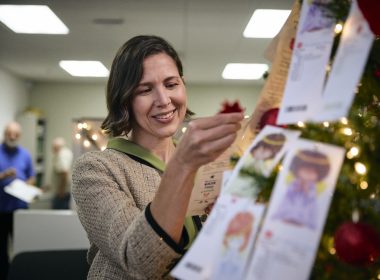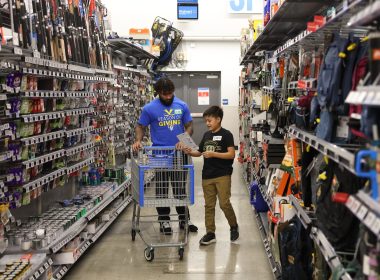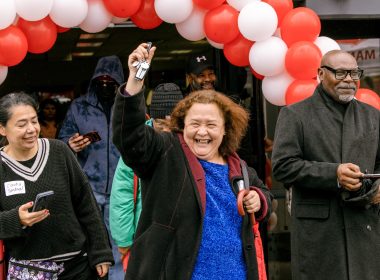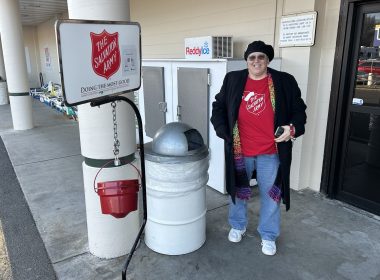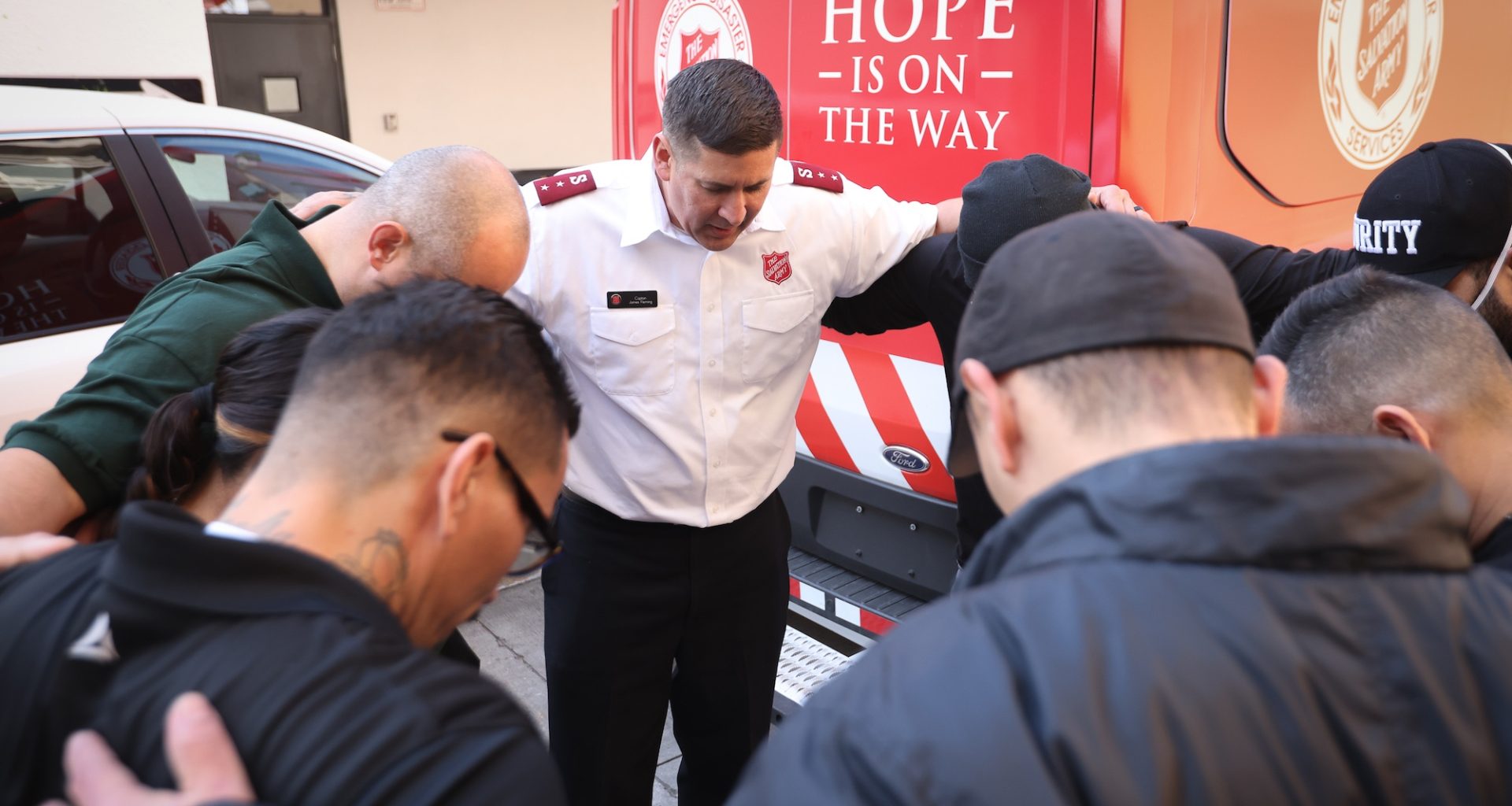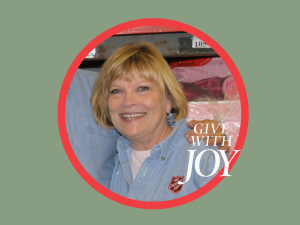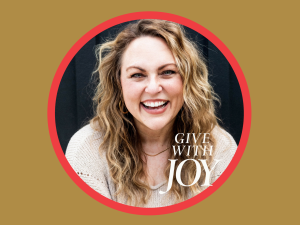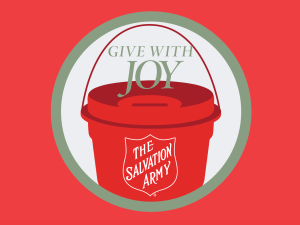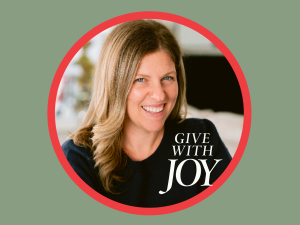I’ve seen pictures of the first home I ever lived in. Then I was about one when we moved into my childhood home.
A blue single story house with birch trees out front and a large rock, where I liked to stand for pictures. I learned to roller-skate outside and even broke my arm in the backyard, after climbing atop and jumping off our swing set. Not recommended.
I have a vivid memory of straightening out strands of lights all the way down the hallway as Neil Diamond’s Christmas album played and we decorated our tree.
We moved as I entered middle school, and the new two-story house became home. And this time, I had a room to make my own.
I carried that with me when I bought a condo in my early 20s and had a whole 800 square feet to make my home.
And now, I live with my husband and our three young boys. It’s full of our stuff, yes, but it’s also filled with so many mental souvenirs. The table my son cut his forehead on after falling. The spot where we sit to read before bedtime. The table I set before Friday night pizza night. The box where the boys stash all their costumes, and the shelves my oldest proudly displays his Lego creations.
It’s our space. A place to feel safe and secure and at ease. Anchored.
It’s home.
Home is part of who we are. It’s part of how we define ourselves. That’s why we do things like decorate our houses and take care of our lawn.
It’s human nature to want to have a place to be, to belong.
For so many of us, a home isn’t just where you are. It’s who you are. It’s why, “where are you from?” is one of the first questions we ask each other.
So, what happens when you have no home?
This year started with a celebration of the New Year in Southern California, the annual Tournament of Roses Rose Parade. It felt fresh and festive, a whole new year of possibilities.
Just days later, just days ago, multiple wildfires driven by high winds devastated the area.
As of this recording, the fires are still burning. The full scale of destruction will take time to assess but the fires are already some of the most destructive in state history having burned roughly 56 square miles across the Los Angeles region. For comparison, the entire city of San Francisco is 49 square miles.
As of now, the fires have damaged or destroyed some 10,000 structures, killed at least 10 people and forced tens of thousands from their homes. I’m sure those numbers will be different when you’re listening to this.
This isn’t the first time fire has ravaged an area—but even now, not even 72 hours since it began, this disaster is poised to be one of the costliest in U.S. history.
And as with any disaster our communities face, The Salvation Army is there.
Here’s Southern California General Secretary Major Anthony Barnes in an interview with CNN on January 9:
“That’s where we get to come alongside them, point them to directions…that they can get those needs met so we can sit with them and find out one: How are you doing right now? And we want to remind people that we are with them no matter what; they are not walking alone through these disasters. That’s the first thing that is most important to us; The Salvation Army likes to let our neighbors in need know that we are with them because we are their neighbors as well.”
The Salvation Army is there before, during, and after disasters strike and is committed to serving the whole person—physically, emotionally and spiritually.
And while these wildfires could become the most devastating in our state’s history, we are prepared to meet needs with love, compassion and hope.
As of right now, teams are deployed at five emergency shelters, serving meals and providing emotional and spiritual care—what we call a “ministry of presence”—and roving teams are working to offer that care, too.
We also know it’s really in the long-term recovery and rebuilding of the community that The Salvation Army is needed most. If you’re watching this all unfold and wondering how you can help, truly the best way right now is to make a financial contribution to help The Salvation Army meet immediate and long-term needs. It allows us to purchase supplies from local vendors to support community businesses in the area. And during emergency disasters, 100% of designated gifts are used to support specific relief efforts. You can visit salarmy.us/socalfire to see more and to give.
As we serve evacuees locally, we’re also grateful to first responders who faced sudden and really harrowing walls of flames January 7. I’m sure you’ve seen the footage of hurricane-force winds gusting to nearly 90 mph and blanketing entire neighborhoods in burning embers.
The biggest blazes spread with terrifying speed in the Pacific Palisades coastal neighborhood to the west of Los Angeles and the community of Altadena, 40 miles away outside the eastern edge of Los Angeles, just north of Pasadena.
I went to high school in Pasadena and grew up in and around the area. It’s one of those places that feels like home to me. And I know a lot of people who live and work there—many of whom were forced to evacuate with little warning.
Emergency personnel worked Tuesday to keep up with rolling evacuation orders: 9:02 p.m., 9:28 p.m., 10:05 p.m., 10:20 p.m., 10:42 p.m., 10:54 p.m. and on and on throughout the night.
[FROM INSIDE POLICE CAR] “Yeah, raining embers, like, when we went up to Altadena It was super heavy smoke, like crazy winds. It almost looked like a tornado—like a fire tornado.”On January 9, I jumped in the back of a Pasadena Police car with two officers, who were on duty for more than 26 hours as the fires raged.
[FROM INSIDE POLICE CAR] “Were there people around or had everybody left for the most part?No, there were lot of people out.
Yeah, like getting their cars.
Oh, like trying to leave?
Like driving up to that area, there was a line of cars, like it was just bumper-bumper traffic going down the hill.
Was like that for like four or five hours.
It started from where we’ll take you to and then it spread all the way out west, which nobody was really expecting.
We went to like the heavy smoke area. We couldn’t even get out of our car. We were just on the PA.
Oh wow.
We went to the neighborhood we’re taking you to, Last night, it was our second call and we had to kick in a couple of doors.
Yeah, we had to kick in doors because like their houses were on fire and no one knew if they were out.
And then we drove through there today and those houses that we were trying to evacuate people from, they’re gone.”
Nearly 48 hours later, the ground was still smoldering as we drove down streets and through neighborhoods I’ve been in and around my whole life. As we drove by the church where my high school graduation was held. Where I’ve stopped to get gas, or coffee, or visit a friend.
[FROM INSIDE POLICE CAR] “How do they disperse you guys with the evacuation orders? Do you get like, this is your block kind of? Or you just go anywhere you can go?It’d be like, we’re on Elmland on Highland, you start working this way, you work this way, you work this way.
Gosh.
They just say everybody show up here and start evacuating.
[DISPATCH IN BACKGROUND]
There were mandatory evacuations from this street, Michillinda, at first, all the way to Lake Avenue and then everything north of Orange Grove.
[DISPATCH IN BACKGROUND]
That car still there? No, no. Well, they pushed it over to the side.
Everything north, you’ll see it up there, it’s like crazy bad.
You saw that one still smoking over there.
[DISPATCH IN BACKGROUND]
And then there’s some the fire came right up to their fence line and then stopped.
I can’t imagine for these people too. I mean, your house didn’t burn down, but this neighborhood’s not going to be the same for years.
[DISPATCH IN BACKGROUND]
We were getting, earlier in the day, a lot of like random flare ups. I’m guessing it’s from like when the wind kind of picks up a little bit the ash or whatever go to the next house. But there hasn’t been anything active since yesterday.”
It was jarring to see such normal aspects of life—red bows lining a fence, a waving Santa, a sign for a holiday market, just normal everyday remnants of festivities from just days ago—and just across the street, entire blocks absolutely leveled. Where only the front steps remain to what was someone’s home. Just strips of deformed metal.
What would you take if you had to leave?
I’m sure you too have considered this impossible question. Documents. Photos. Jewelry. Medicine. Heirlooms. Clothing. Chargers.
It doesn’t feel like enough.
Because there’s stuff, and then there’s home.
Yes, the stuff can largely be replaced. What’s not replaceable is home.
And like you, I am heartbroken for so many families suddenly adrift. The communities—the businesses, the gathering places—that are no more.
As with any disaster, there really are no words.
Los Angeles is a big city—the second most populated city in the nation. And yet, everyone I’ve talked to in the past few days knows at least one family who lost their home.
We’d already been planning for a season of the podcast called “Warm Hearts, Warm Homes,” and we’re keeping that theme as we explore the meaning of home and the conviction of The Salvation Army that no one should be without a place to call home.
Last year, the U.S. experienced a more than 18 percent increase in the number of people experiencing homelessness, the largest annual jump since the count began in 2007.
Others may have a roof overhead but struggle to afford basic essentials like winter coats, hot meals and utility bills.
And now, in Southern California, so many face the abrupt loss of home and uncertain next steps.
So in these coldest months of the year, how can we warm hearts and homes in tangible ways for our neighbors in need?
How can rally around those facing a heartbreaking reality? How can we offer them the hope of Jesus? How can we do good right where we are?
Next week, we’ll talk to Captains Nick and Becky Helms, the corps officers or pastors of The Salvation Army in Pasadena, as they, too, were evacuated, as members of their congregation lost their homes and as their community—their ministry—now faces a new reality.
Until then, can you do just one thing for one person—something you wish you could do for everyone?
Now is a very good time to be good to each other.
Additional resources:
- Help us love beyond disaster at salarmy.us/socalfire.
- If you are one of the hopefuls, get on the list for the Do Good Digest, our free 3-minute weekly email newsletter used by more than 20,000 hopefuls like you for a quick pick-me-up in a busy day.
- If you are enjoying this show and want to support it, leave a rating and review wherever you listen to help new listeners hit play for the first time with more confidence.
Listen and subscribe to the Do Gooders Podcast now.

